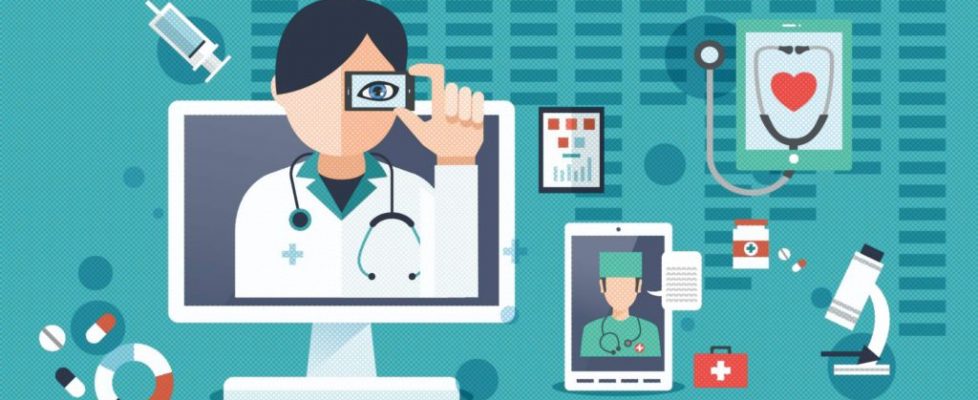The Future of Telehealth: Patient-Generated Data
A doctor gets ready to meet with her patient on a telehealth visit, looking at the medical chart for real-time EKG and temperature results just before signing on to the video call. The hospitalist checks a list of at-home oxygen saturation levels for a dozen patients discharged from the hospital after COVID-19 treatment the previous week. During his morning routine, a nurse checks the blood pressures posted on the EMR for cardiology office patients seen for chronic high blood pressure, to determine if any need to discuss medication or diet adjustments.
The concept of patient-generated data isn’t new, but it’s gaining prominence as COVID-19 has pushed telehealth front and center in the national conversation. The disease is unlikely to go away any time soon, and those in the healthcare field are looking for ways to help patients using accurate diagnostics and without office or hospital visits.
Even without the pandemic, though, patient-generated data can provide additional information for regular care and diagnostics, improving patient quality of life and potentially saving the healthcare system money while providing better care. The good news is that technology already makes it possible for patients to share data from their own consumer devices, in addition to prescribed devices. The key is to determine how to do that accurately and securely.
The current status of patient-generated data
Some research and clinical sites already incorporate patient-generated data, but not on a wide-spread basis. NYU Langone shows one use case. They are incorporating Fitbit biometric data in a sleep apnea study. The idea is to see if this data can help underserved populations who may not have easy access to the healthcare they need. This population could be missing out on sleep apnea diagnoses as a result, and sleep apnea can lead to health problems including heart disease, hypertension, mood, and memory issues.
Diagnosing and treating sleep apnea can lower healthcare costs overall while improving quality of life. Consumer devices such as Fitbits can collect the data outside of a medical setting, making it less expensive to diagnose, more convenient for patients, and providing greater access to diagnostics and the resulting care.
Cardiac telemetry is another area where data streaming is possible. Traditionally, heart monitors are worn for a time period, sent in for processing, or given to the physician for data upload. Some heart monitors now have the ability to stream data in real-time, alerting the physicians to concerns while they’re happening, rather than the physician waiting for the report or data when the monitoring period ends.
Patients are interested in this personal biometric data as well. A 2018 national survey showed that 49% of consumers want devices to monitor their heart health. The study showed that 63% said they currently own a wearable device or did so in the past, compared to 42% two years prior. Even if the data isn’t given to their physicians in real-time, they can bring the information to their doctor after the fact, and the information can be used as part of their medical record or considered for the bigger picture.
Wearable devices are becoming increasingly affordable and popular. The first Fitbit was produced in 2009; there are now 28 million Fitbit users. Fitbits are used for sleep tracking, activity, and heart rate monitoring, as well as step counting. The capabilities of Apple watches for biometric use increased as well. More than 30 million Apple watches were sold in 2019. Some Apple watches are able to generate an EKG, similar to leading medical devices. They can track heart rate, and incorporate apps for glucose monitoring, detecting falls, and tracking diet and nutrition.
The future is now
The future of telehealth and medicine includes transmitting and using patient-generated data in a streamlined, real-time manner. While few medical practices are using patient-generated data this way now, this practice is already active. Maven Wave is working on projects to incorporate patient-generated data into EMR using the patient’s own devices.
The sky is the limit for how patient-generated data can be used in healthcare, adhering to the consent given by the patient. Doctors can use it to treat the patient via telehealth and for monitoring conditions. The devices may provide blood pressure, temperature, activity levels, glucose monitoring, or EKG data. The information can be used for patient treatment or research, or healthcare system analytics, depending on consent. Research and analytics can be optimized with Google’s AI platform and Big Query.
Clinical trials can also use the Bring Your Own Device program to remotely record patient-generated data, allowing for involvement from more diverse populations like those in remote areas or those with mobility issues who can’t otherwise participate. This improves clinical trials by making them democratic and more inclusive, expanding the pool of potential subjects. Patients can use their own devices or those provided by the researchers. Research data can be used to monitor adverse side effects during a trial or just record vital signs and other general baseline patient information.
While these are just some of the use cases, healthcare systems might have their own ideas as well. Maven Wave is ready to work with healthcare organizations to integrate patient-generated data into whatever protocol or need is there.

